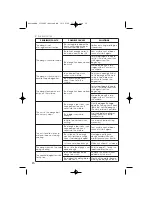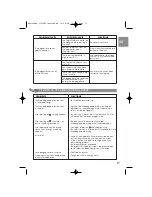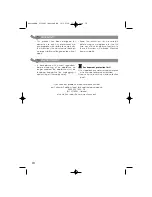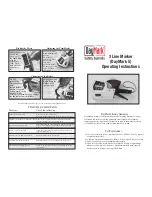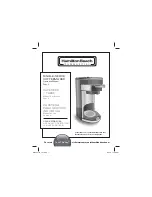
14
PRACTICAL ADVICE
1. P
REPARING THE RECIPES
• All ingredients used must be at room
temperature (unless otherwise indicated)
and must be weighed exactly.
Measure liquids with the graduated
beaker supplied. Use the double ended
spoon supplied to measure teaspoons
on one side and tablespoons on the
other.
All spoon measures are level and
not heaped. Incorrect measurements will
give bad results.
• Follow the preparation order.
> Liquids (butter, oil, eggs, water, milk)
> Salt
> Sugar
> Flour, first half
> Powdered milk
> Specific solid ingredients
> Flour, second half
> Yeast
• It is important to measure the quantity of
flour precisely. That is why you should weigh
out flour using a kitchen scale. Use packets
of flaked dried yeast (sold in the UK as Easy
Bake or Fast Action Yeast). Unless otherwise
indicated in the recipe, do not use baking
powder. Once a packet of yeast has been
opened, it should be sealed, stored in a
cool place and used within 48 hours.
• To avoid spoiling the proving of the dough,
we advise that all ingredients should be
put in the bread pan at the start and that
you should avoid opening the lid during
the rising time (unless otherwise indicated
in the recipe). Carefully follow the order of
ingredients and quantities indicated in the
recipes. First the liquids, then the solids.
Yeast should not come into contact with
liquids, sugar or salt.
•
Bread preparation is very sensitive to
temperature and humidity conditions.
During hot weather, use liquids that are cooler
than usual. Likewise, if it is cold, it may be
necessary to warm up the water or milk. Any
liquid used should be tepid, about 20 to 25°C
(except for Super Fast Bread which should be
35 to 40°C max.).
•
It can also sometimes be useful to check
the state of the dough during the second
kneading:
it should form an even ball which
comes away easily from the walls of the pan.
> if not all of the flour has been blended
into the dough, add a little more water,
> if the dough is too wet and sticks to the
sides, you may need to add a little flour.
Such corrections should be undertaken
very gradually (no more than 1 tablespoon
at a time) and wait to see if there is an
improvement before continuing.
• A common error is to think that adding
more yeast will make the bread rise
more.
Too much yeast makes the structure
of the bread more fragile and it will rise a
lot and then fall while baking. You can
determine the state of the dough just
before baking by touching it lightly with
your fingertips: the dough should be
slightly resistant and the fingerprint should
disappear little by little.
2. U
SING YOUR BREAD MACHINE
• If there is a power cut:
during the cycle,
the programme is interrupted by a power
cut or mishandling, the machine has a 7-
min protection time during which the
settings are saved. The cycle starts again
where it stopped. Beyond that time, the
settings are lost.
• If you plan to run a second programme
and bake a second loaf,
open the lid
and wait 1 hour before beginning the
second preparation.
• For the baguette programme, after the
kneading and dough rising stages, you
have to use the dough within one hour
following the second beep. Beyond that
time, the machine resets itself and the
baguette programme is lost.
3. R
EMOVING LOAVES
• Loosen the sides and corners of the loaf
with a wooden or heat resistant plastic
spatula. Shake the upturned baking pan
firmly a few times to loosen the loaf and
turn it out onto its side.
• If the paddles are stuck in the loaf, leave
the loaf to cool slightly for 5-10 minutes,
then gently remove the paddles using the
metal hook.
Do not touch the paddles as
the metal may still be very hot.
• Stand the loaf upright and leave to cool
for at least one hour before slicing.
NoticeHBB_3316683:NoticeHBB 19/12/08 12:06 Page 14

















